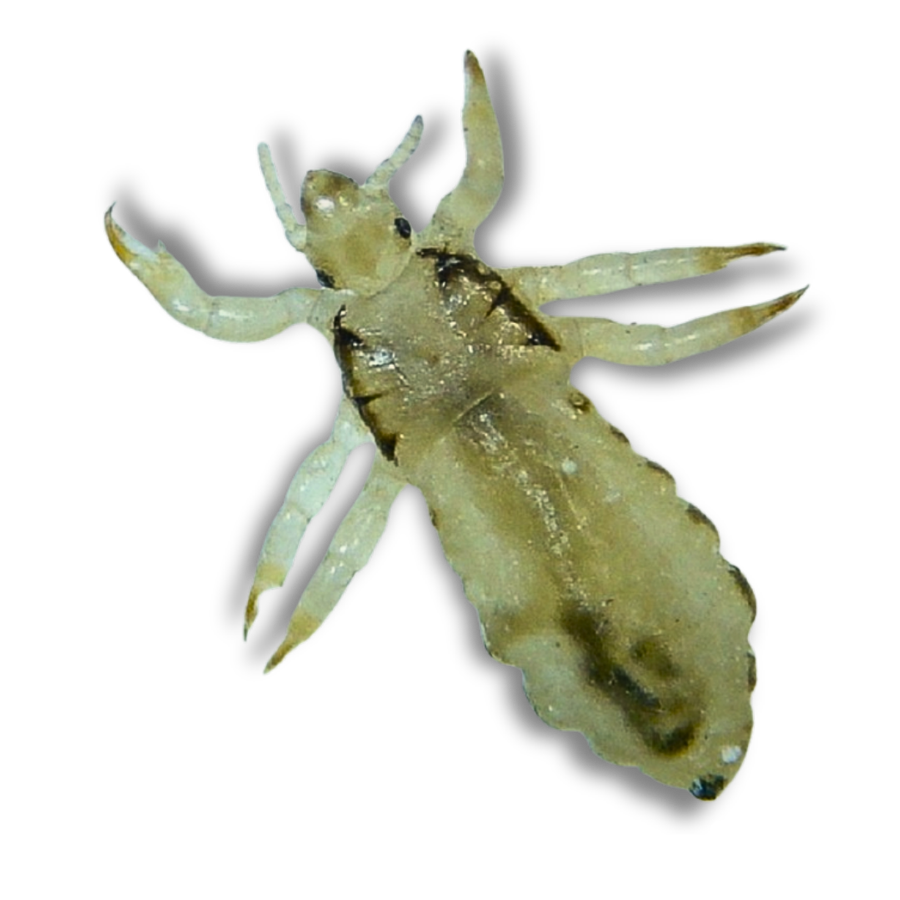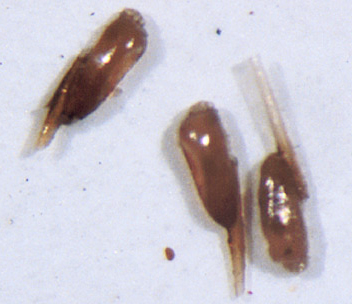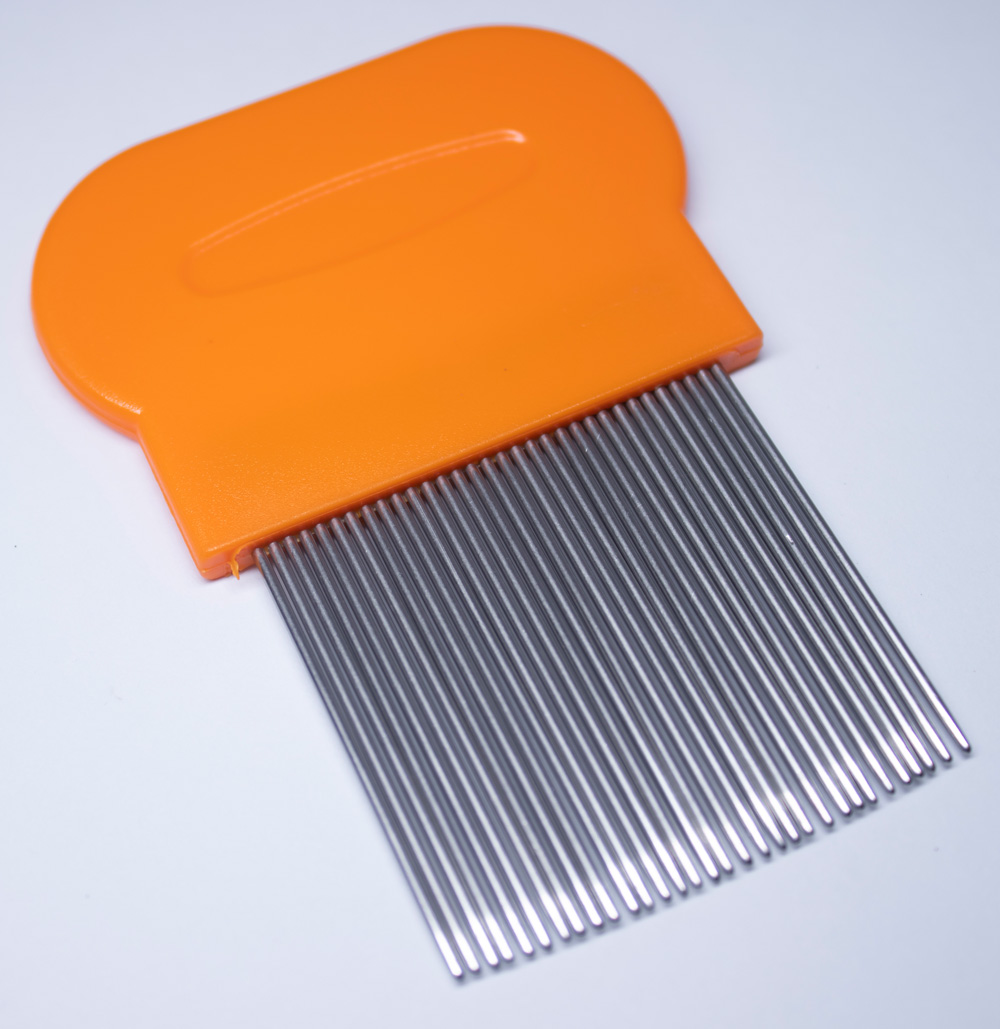- Head Lice 101: The Basics
- The Facts
- How to Avoid a "Hair-Raising" Experience With Effective School Policy
- 10 Tips for Manual Removal
Head Lice 101: The Basics
Signs of Head Lice
- frequent head scratching
- complaints of itchy scalp/head, and
- redness behind ears or on the back of the neck
NEVER apply pesticides to any classroom, bus, furniture, clothing, or student in an attempt to control head lice. These applications do not help control lice populations. The children and staff are exposed to needless pesticide risk, and the school faces unnecessary liability. The University of Georgia, National Pest Control Association, National Pediculosis Association, and Georgia Pest Control Association all support this no-pesticide policy.
How Can I Control the Spread of Head Lice?
- Head lice are primarily transmitted from person to person through head-to-head contact or by sharing personal items that come into contact with the scalp, such as brushes, hats, or headphones.
- Lice cannot jump, hop, or fly, but they can crawl rapidly.
- Discourage children from sharing combs, brushes, hair accessories, scarves, hats, or headphones to diminish the spread of lice. If headphones are used as part of a class, wipe them with a damp cloth before allowing another student to use them. Store each student's hat/coat separately. Articles can be isolated in bags if space is a problem.
- If you are concerned about head lice on carpets or furniture, vacuum them or wipe smooth surfaces with a damp cloth. Notify bus drivers of a head lice outbreak so they can wipe school bus seats with a damp cloth.
- Teach all school personnel to look for signs of head lice and establish a written school head lice policy. Early detection of head lice and timely communication to your designated monitor are both critical steps to control outbreaks.
The Facts
Head lice can affect anyone. They do not imply a lack of hygiene or cleanliness of the infested person.
- Lice cannot live longer than 24–48 hr off their human host.
- Head lice cannot live on pets.
- Head lice cannot reproduce in carpets, furniture, or other household furnishings.
- More than 12 million people, mostly children and school personnel, get head lice every year. Several research groups have identified populations of head lice in the United States that could not be killed with commonly used insecticidal shampoos.
- Do not panic! Head lice are not an emergency and, in most cases, do not pose a heath risk—they are simply an inconvenience that should be dealt with compassionately and calmly.
- The best treatment for head lice is manual removal. Encourage parents and school nurses to follow thorough manual removal techniques as a first step. See "10 Tips for Manual Removal" in this publication.

Head Lice are Small, Wingless Parasitic Insects
They are typically 1/6 to 1/8 in. long, and have light brown bodies with darker legs. The claws on the end of each of their legs (shown in Figure 1) are adapted to grasping and holding onto hair.
A Child Cannot "Catch Nits." Nits (Lice Eggs) Can Only be Laid by Live Lice.
Female head lice glue their grayish-white to brown eggs (nits) securely to hair strands. The eggs are resistant to pesticides, and they are difficult to remove without a specialty fine-toothed "nit-comb." The nits are generally near the scalp, but they may be found anywhere on the hair strand.

How to Avoid a "Hair-Raising" Experience With Effective School Policy
Head lice can spread rapidly through the school population, and your school should establish a written policy to deal with these outbreaks. Many schools have adopted a no-nit policy. School administrators, however, should carefully consider both advantages and disadvantages before establishing a no-nit policy.
What are the Advantages of a "No-Nit" Policy?
Under a no-nit policy, children may not return to school until the school confirms complete removal of all lice and nits. In this way, infested children will not transmit head lice to others.
What are the Disadvantages of a "No-Nit" Policy?
Children are often excluded from school even when they are not at risk to transmit head lice. In a Harvard University study, dandruff, fibers, dirt, scabs, skin cells, knotted hair, or other insects are misdiagnosed as head lice 40% of the time! Another study found that most children with nits alone did not become infested with adult lice. These reports indicate that many children are unnecessarily excluded from school under a strict no-nit policy.
What are the Components of an Effective Head Lice Policy?
- Designate a person (such as a school nurse or principal) to check all students when an outbreak occurs. This person must also check infested children daily for 10 days after treatment (manual removal, shampoo, etc.) and re-admission to school. A repeat treatment of the child may be necessary in 7–10 days.
- The designated monitor must be trained to identify head lice and nits. Do not exclude children from school based on the diagnosis of an untrained or inexperienced person. Talk to your local health department about training opportunities.
- Educate parents and students about head lice and how to avoid infestation. Emphasize prevention! Distribute the UGA Extension Circular 851, Parent's Guide to the "Nitty-Gritty" about Head Lice, to concerned parents.
- Be sensitive when dealing with children (and parents of children) that have head lice. Although not dangerous, head lice can be traumatic.
- Base your policy on the presence of live, adult head lice. Policies based only on nits will be inconsistent and may unnecessarily exclude children from school.
10 Tips for Manual Removal

“Manual removal is the safe alternative and necessary component of any head lice treatment regimen.” –National Pediculosis Association
You can completely control a head lice infestation with manual removal alone. You cannot completely control head lice with head lice shampoos alone. You must combine shampoo treatment with manual removal.
- Work in a well lighted area or use a flashlight and magnifier (or your phone's camera).
- Use a grooming comb or hairbrush to remove tangles. A hair detangler spray or other hair conditioner may aid in this process.
- Divide the hair into sections and fasten off the hair that is not being worked on.
- Use a lice comb to detect and remove lice and nits. See Figures 1 and 2 in this publication.
- Go through hair sections from the scalp to the end of the hair. Nits are usually found close to the scalp.
- Dip the comb in a cup of hot, soapy water or use tape to remove lice, nits, or debris from the comb.
- Sift through the same section of hair and look for attached nits and live lice.
- Move on to the next section until the entire scalp and all hair has been checked.
- Screen the infested person every day for 10 days and regularly thereafter.
- If additional nits (at least 3–5 per day) are discovered, another manual search is recommended.
We acknowledge and thank L. Paul Guillebeau and Gretchen Van De Mark, former UGA entomologists, for their contributions to the original manuscript of this publication.
Status and Revision History
Published on Aug 17, 2004
Published on Mar 23, 2009
Published with Full Review on Feb 01, 2014
Published with Minor Revisions on Jul 23, 2024


























































